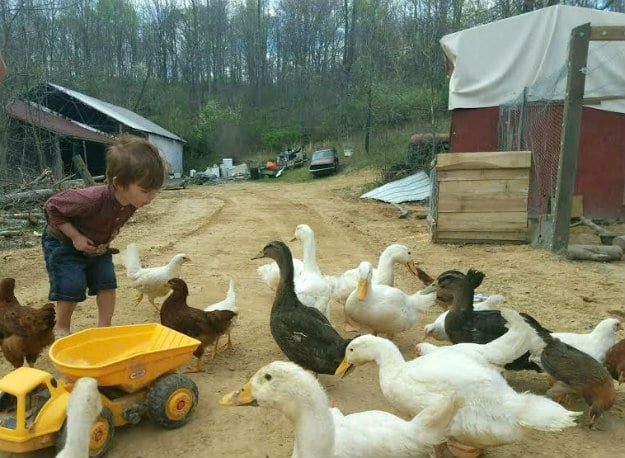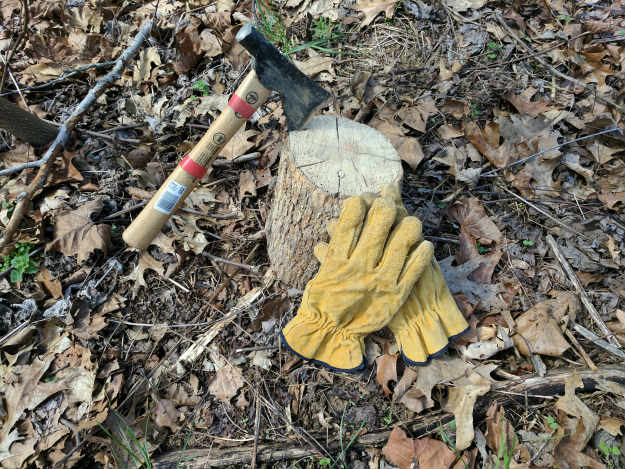Growing up on a homestead offers not only the chance for a picture-perfect childhood, but also gives parents the opportunity to begin teaching the kiddos how to be self-reliant as soon as they learn how to walk! Children homesteading can be synonymous with children playing with these helpful tips.
Children Homesteading – Good for the Whole Family
Homesteading children are exposed to a myriad of learning opportunity on a daily basis. Each chance to help their parents and learn why they are doing what they are doing should be capitalized. Even a toddler has the capability to absorb information about their surroundings and be enthralled by all the sights, sounds, smells, and textures they can touch while helping do necessary chores around the farm.
The work will seem like play to the little ones! While older children and teenagers will likely come to view their given tasks as chores, hard work breeds not only good character. Besides, they'll also get a sense of accomplishment when a task or project has been completed.
The homesteading education does not need to be all work and no “play.” Family fun days designed with a purpose can be both a learning experience and a memory-making occasion. If the homesteading family is also homeschooling the children, there's ample opportunity to incorporate many homesteading topics. Animal care, gardening, weather awareness, energy production, and water-related studies can easily fit into the weekly curriculum. They'll be more on homeschooling for homesteading families in a future article – so stay tuned!
However, even without a formalized homeschool environment, kids learn a lot. Children homesteading become keenly aware of the fact food does not just materialize at a grocery store. When and how to involve children in the butchering process varies by both age and maturity of the child, but you should begin introducing the concept that animals are raised for meat on the homestead at a very early age. Even though children could be in their teen years before actively engaging in the killing and butchering of livestock, early general knowledge will avoid a sense of shock when their favorite bunny or duck comes up missing from the pen.
Teach the children to respect the animal and the sacrifice it is making, while simultaneously instilling in them the responsibility of raising livestock. An animal should have an acceptable quality of life until it comes to an end as part of their “job” on the farm.
Ten Tips for Teaching Children Homesteading
Start Them Young

Tip #1. Make egg collection and the feeding of small livestock part of the daily routine for homesteading children once they become a toddler. This way, they can learn to become comfortable around the animals at even a young age. The earlier the children are introduced to the livestock, the less likely they will be frightened of them. Then the essential safe handling (for both the child and the creature) can be taught.
Tip #2. Learning their way around the homestead, especially if it is comprised of a large amount of acreage, is necessary for a child's safety. It will also enable them to work the land and find necessary tools, which are crucial skills for children homesteading. Teach map-reading skills and terrain recognition (and ultimately tracking skills) beginning at age three or four. The first map could be a simple drawing or can be comprised of photos showing the child how to get from the house to a nearby spot, like the chicken coop to help with egg collection. When the child is older and orienteering skills have advanced, give the child a series of spots to find on the homestead using GPS coordinates or photos of the terrain to help them identify where it is located.
Survival Skills

Tip #3. Learn new survival skills and enhance existing ones by hosting a family fun day competition. Include other homesteading children and families to increase the enjoyment and to add a bit of friendly competition to the mix. Possible homesteading Olympics activities include: chicken wrangling, swimming contest, fire-starting contest, wild edibles scavenger hunt, or simple tool creation out of found or natural objects. The possibilities are endless and can be adapted to suit the age and ability levels of the children involved.
Tip #4. Rainy days should not deter the homesteading skills learning. Being stuck inside offers parents the chance to teach children some important food preparation and preservation skills, as well as first aid training. You can also play homemade homesteading board games, trivia games, or run through a set of agriculture flash cards created for just this type of indoor togetherness moment. Play a series of “Minute to Win it” type games using actual items or photos of items commonly used around the homestead to identify parts found on the farm. Place the items in a sack or on a table and see who can identify the item or its use on the homestead. Then see who can accurately name/identify the largest number of items in one minute.
Tip #5. Teach the children – both boys and girls – how to sew and do leather-craft. These common homesteading skills can be taught early by creating simple potholder or pillow-sewing projects and making leather keychains or belts.
Tip #6. Give the children their own container garden or a row in the field to tend to their own crops. The children will not only get their hands dirty in the soil, getting used to the feeling, but they'll also learn how to cultivate crops, how weather and water conditions impact the harvest and how much food makes it to the family table. Help the child make a meal or side dishes out of what they grew themselves.
Tool Skills

Tip #7. Wood chopping can be extremely dangerous and should be completed only by older and trained children or teens. However, there is no need to wait to simply introduce the concept of using wood as fuel on the homestead. Younger children can help gather kindling and feel a sense of accomplishment when they tote their haul back to the house in their own wagon. Preschool-age to older children homesteading can haul the chopped wood by hand or in a wagon back to the wood pile and stack it – building muscle tone and knowledge as they go. You can also teach how to identify different types of wood found on the homestead and how specific types of wood are best used.
Tip #8. Basic animal husbandry skills can be taught in a variety of ways as children age and mature. Have the children help build or repair animal enclosures. Use this time spent together to teach them about the animal who will live inside. You can be specific! Teach them common ailments and how to identify and rectify them, what the animals eats, how much, and where the feed comes from, etc.
Tip #9. Build simple machines with the children to teach them how tools aid in the work around the homestead. For example, using leverage to move a heavy object, how a hoist is used to lift a heavy object or animal, etc.
Watch this video by BackyardHomesteading as he shows backyard homestead kids skills on making fire:
Tip #10. Dive into science with hands-on energy creation machines and water purification projects. Teach the children how to make a simple solar and/or hydro-powered engine, show them how to purify water from a pond or creek, and explain why good water quality is essential to humans, livestock, and crops. Allow children to help with machinery repairs, even if their role is solely as glorified gopher. This gives parents the opportunity to explain how the machinery works and why it is important to the homesteading way of life. It also teaches repair skills age-appropriate for children homesteading.
Which homesteading skills would you want to teach your children? Let us know below in the comments!
Read this homesteading guide for beginners !
Follow us on Instagram, twitter, pinterest, and facebook!


Leave a Reply